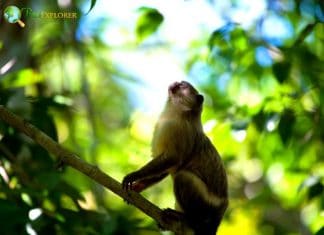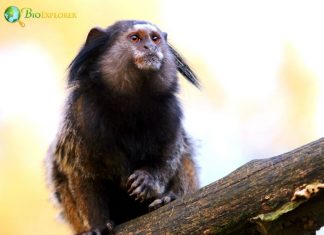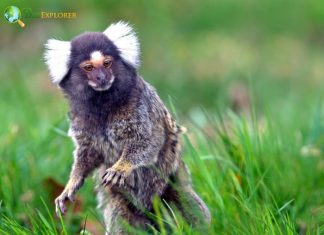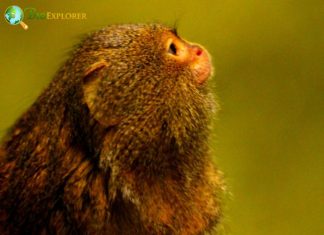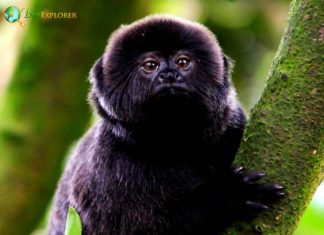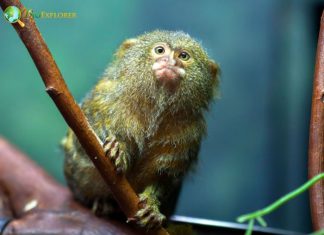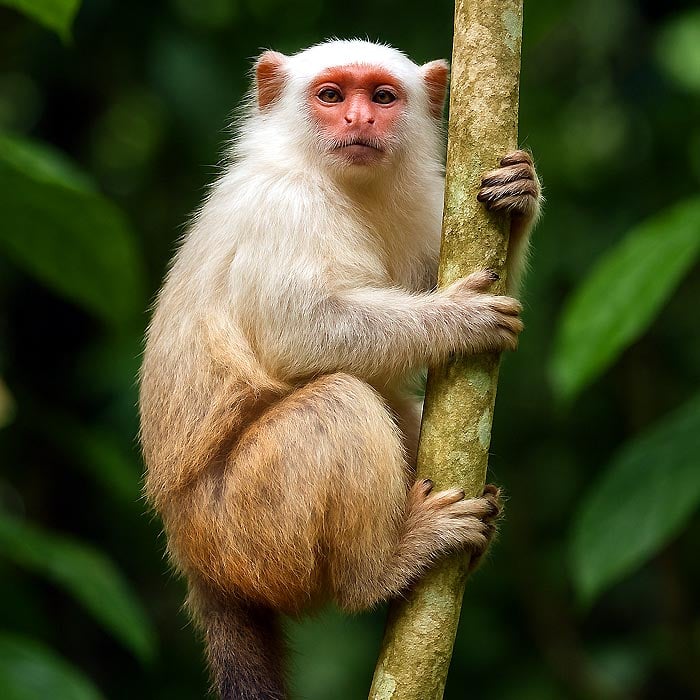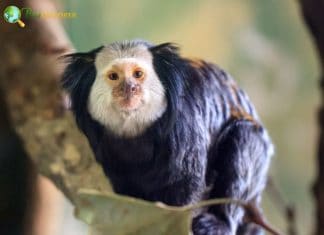
Marmoset monkeys are small, fascinating primates native to the forests of South America. Despite their tiny size, typically only 9 inches tall, these monkeys have surprisingly remarkable features.
Marmosets are extremely agile and able to leap distances over 5 times their body length. This allows them to navigate through the treetops where they reside. They have specialized claws on their hands and feet, enabling them to grip onto branches.
Their most distinguishing characteristic is their small stature, large eyes, and fluffy fur. Common marmosets, the most widespread species, have white tufts on their ears that stand out against their predominantly grey fur.
So, let’s swing over to learn more about these captivating little primates!
Table of Contents
- Marmoset Monkeys
- Black-headed Marmoset
- Black-Tailed Marmoset
- Black-Tufted Marmoset
- Buffy-headed Marmoset
- Buffy-tufted Marmoset
- Common Marmoset
- Eastern Pygmy Marmoset
- Emilia’s Marmoset
- Goeldi’s Marmoset
- Gold-And-White Marmoset
- Hershkovitz’s Marmoset
- Marca’s Marmoset
- Maués Marmoset
- Munduruku Marmoset
- Pygmy Marmoset (Finger Monkey)
- Rio Acari Marmoset
- Rondon’s Marmoset
- Roosmalens’ Dwarf Marmoset
- Santarem Marmoset
- Satéré Marmoset
- Schneider’s Marmoset
- Silvery Marmoset
- White Marmoset
- White-Headed Marmoset
- Wied’s Marmoset
- Marmosets by Year of Taxonomy Classification
- Marmoset Monkey Habitats and Behaviors
- What Do Marmosets Eat?
- Marmoset Reproduction and Lifespan
- Threats Facing Marmosets and Conservation
- Marmosets as Pets
- Unique Marmoset Monkey Facts
- Marmoset Monkeys FAQs
Marmoset Monkeys
Here is the complete of all 24 recognized marmoset monkeys in the world!
Black-headed Marmoset
Species Name: Mico nigricepsBlack-Tailed Marmoset
Species Name: Mico melanurusBlack-Tufted Marmoset
Species Name: Callithrix penicillataBuffy-headed Marmoset
Species Name: Callithrix flavicepsBuffy-tufted Marmoset
Species Name: Callithrix auritaCommon Marmoset
Species Name: Callithrix jacchusEastern Pygmy Marmoset
Species Name: Cebuella niveiventrisEmilia’s Marmoset
Species Name: Mico emiliaeGoeldi’s Marmoset
Species Name: Callimico goeldiiGold-And-White Marmoset
Species Name: Mico chrysoleucosHershkovitz’s Marmoset
Species Name: Mico intermediusMarca’s Marmoset
Species Name: Mico marcaiMaués Marmoset
Species Name: Mico mauesiMunduruku Marmoset
Species Name: Mico mundurukuPygmy Marmoset (Finger Monkey)
Species Name: Cebuella pygmaeaRio Acari Marmoset
Species Name: Mico acariensisRondon’s Marmoset
Species Name: Mico rondoniRoosmalens’ Dwarf Marmoset
Species Name: Mico humilisSantarem Marmoset
Species Name: Mico humeraliferSatéré Marmoset
Species Name: Mico satereiSchneider’s Marmoset
Species Name: Mico schneideriSilvery Marmoset
Species Name: Mico argentatusWhite Marmoset
Species Name: Mico leucippeWhite-Headed Marmoset
Species Name: Callithrix geoffroyiWied’s Marmoset
Species Name: Callithrix kuhlii![]()
Marmosets by Year of Taxonomy Classification
Here is the list of marmosets and their year of taxonomy classification starting with the Common marmoset in 1758 by Carl Linnaeus. The most recent marmoset species added to the list was Munduruku marmoset in 2019 by a group of Brazilian primatologists.
| Common Marmoset | Callithrix jacchus | 1758 | Linnaeus |
| Silvery Marmoset | Mico argentatus | 1766 | Linnaeus |
| black-pencilled marmoset | Callithrix penicillata | 1812 | ÉÉ. Geoffroy Saint-Hilaire |
| Black-tailed Marmoset | Mico melanurus | 1812 | É. Geoffroy Saint-Hilaire |
| Buffy-tufted Marmoset | Callithrix aurita | 1812 | É. Geoffroy Saint-Hilaire |
| Geoffroy’s marmoset | Callithrix geoffroyi | 1812 | Humboldt |
| Santaréém Marmoset | Mico humeralifer | 1812 | É. Geoffroy Saint-Hilaire |
| Pygmy Marmoset | Cebuella pygmaea | 1823 | Spix |
| Gold-and-white Marmoset | Mico chrysoleucos | 1842 | Wagner |
| Buffy-headed Marmoset | Callithrix flaviceps | 1903 | Thomas |
| Goeldi’s Marmoset | Callimico goeldii | 1904 | Thomas |
| Emilia’s Marmoset | Mico emiliae | 1920 | Thomas |
| Golden-white Bare-ear Marmoset | Mico leucippe | 1922 | Thomas |
| Eastern pygmy marmoset | Cebuella niveiventris | 1940 | Löönnberg |
| Hershkovitz’s Marmoset | Mico intermedius | 1977 | Hershkovitz |
| Wied’s Black-tufted-ear Marmoset | Callithrix kuhlii | 1985 | Coimbra-Filho |
| Black-headed Marmoset | Mico nigriceps | 1992 | Ferrari and Lopes |
| Mauéés Marmoset | Mico mauesi | 1992 | Mittermeier, Schwarz and Ayres |
| Marca’s Marmoset | Mico marcai | 1993 | Alperin |
| Black-crowned Dwarf Marmoset | Mico humilis | 1998 | M. van Roosmalen, T. van Roosmalen, Mittermeier and de Fonseca |
| Sateréé Marmoset | Mico saterei | 1998 | Silva Jr. and Noronha |
| Rio Acaríí Marmoset | Mico acariensis | 2000 | M. van Roosmalen, T. van Roosmalen, Mittermeier and Rylands |
| Rondon’s Marmoset | Mico rondoni | 2010 | Ferrari, Sena, Schneider and Silva Jr. |
| Munduruku marmoset | Mico munduruku | 2019 | Costa-Araúújo, Farias & Hrbek in Costa-Araúújo, Melo, Canale, Hernáández-Rangel, Messias et al. |
![]()
Marmoset Monkey Habitats and Behaviors
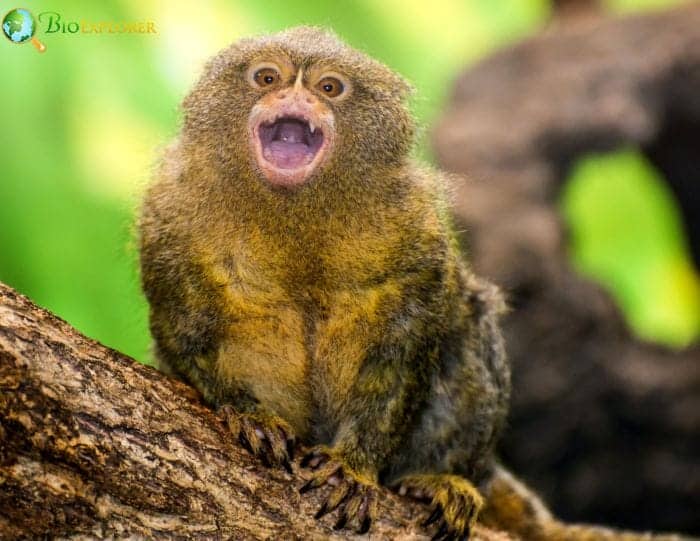
Marmosets are native to forested areas of South America, mainly in Brazil. They reside in the tropical regions of the Amazon rainforest, with dense canopies and plenty of large trees.
- As tree-dwellers, marmosets rarely descend to the ground. With specialized claws and gripping tails, they can leap distances over 5 times their 9-inch body length between branches. This agility allows them to hunt insects and sap high up in the treetops.
- Marmosets live together in small family groups of 3 to 15 members. These groups usually consist of a breeding male and female, along with their offspring and some extended family. They communicate frequently using a variety of clicks, trills, and high-pitched sounds.
Some of their most interesting behaviors include:
- Cooperative care of infants: Fathers, siblings, and other adults help carry and care for newborn twins.
- Food sharing habits: Marmosets will share especially tasty food sources with other group members.
- Scent marking: They mark tree branches and trunks with scents from scent glands to signal group territory.
During the day, marmoset family groups will split up to forage for gum, fruit, and insects. But they always reconvene to sleep in the high canopies at night. Their favorite food is nutrient-rich sap, which they are specially equipped to harvest.
![]()
What Do Marmosets Eat?
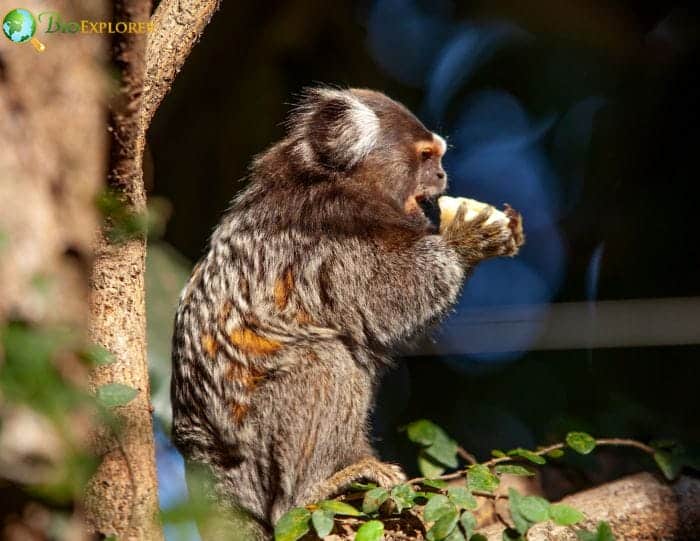
Marmosets exhibit impressive adaptability in their diet to exploit many types of food sources. As an omnivore, the average marmoset eats various plants and animals.
- Fruit makes up around two-thirds of the overall marmoset diet. They will sniff out ripe, sweet fruits on vines, shrubs, and rainforest trees using their keen sense of smell. Some favorite fruits include figs, papaya, and bananas. Marmosets use canine teeth to bite off pieces of soft fruit and mash plant material.
- Marmosets heavily rely on tree sap (gum) flowing from holes pecked into trunks of leguminous trees. Gouging holes to extract nutrient-dense sap makeup over one-quarter of their daily feeding time. This gum provides proteins, carbohydrates, minerals, and moisture. A “gouging claw” on their middle toe helps marmosets scratch and scrape tree bark to open up sap flows. .
- Another key food source is floral nectar. A specialized jaw structure allows a marmoset to pierce a flower or fruit base to drink the sugary nectar inside. Their long lower incisors help cut incisions to access internal floral resources.
- Marmosets supplement their diet by preying on insects like grasshoppers, caterpillars, and spiders found in canopy foliage and tree hollows. Their rapid movements enable them to snatch and capture prey.
- Insect consumption provides essential fats and proteins not found in plants. Small vertebrates such as lizards, frogs or even baby birds are also sporadically eaten for extra nutrients.
The cooperative foraging in marmoset groups allows them to harvest and share a bounty of resources. Marmosets maximize nutritional intake across the rainforest by splitting up to find various food patches and then alerting family members to an area of abundance.
![]()
Marmoset Reproduction and Lifespan
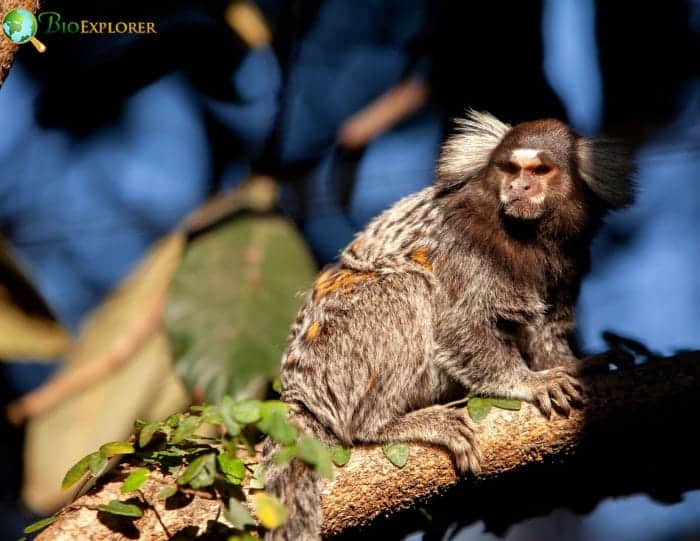
Marmosets reach sexual maturity between 12-18 months. They tend to give birth to twins rather than single infants. Female marmosets release multiple eggs during ovulation, resulting in high twinning rates[1].
- Pregnancy lasts around 5 months, culminating with the female giving birth to twins 95% of the time. Newborn marmoset monkeys weigh only around 25 grams but develop rapidly under cooperative care.
- Infant marmosets depend highly on parents and other group members for food and transportation during the first few weeks. Fathers play an unusually active role, such as carrying the young almost immediately after birth. Siblings and extended family will also help carry and feed the infants.
- Marmosets remain with their family group for life, and breeding is usually reserved for the dominant male and female pair. Both sexes assist in raising offspring for the next breeding cycle.
- The average marmoset lifespan in the wild is typically only 8 to 12 years. But under human care in zoos or sanctuaries, their lifespan extends to 15 to 18 years. The oldest recorded marmoset (Goeldi’s marmoset) reached just over 22.2 years old while living in captivity.
![]()
Threats Facing Marmosets and Conservation
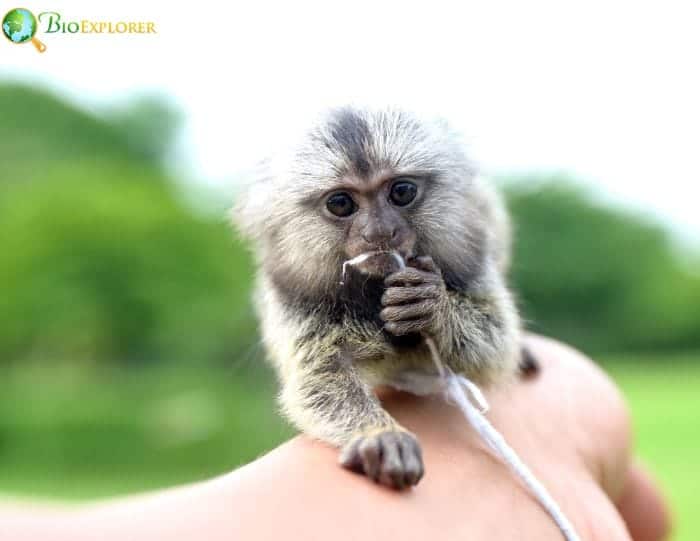
Marmosets are facing severe population decline due to the loss and damage of their forest habitats. As their jungle regions become increasingly fragmented by logging, agriculture, and development, marmoset groups become more isolated and vulnerable to external threats.
habitat loss and Deforestation
The rich and biodiverse rainforests marmosets inhabit are being cleared at staggering rates for timber harvesting, cattle ranching, and palm oil plantations. The Buffy-headed marmoset, for example, is critically endangered, with deforestation in its Atlantic rainforest habitat being a primary driver. It’s estimated that up to 80% of this biome has vanished due to logging and agricultural conversion. This habitat loss damages food supplies and removes shelter and connectivity between marmoset clans. Small forest fragments may lack adequate sap-producing trees.
Wildlife Trafficking
The illegal exotic pet trade poses a great risk to marmoset populations struggling with habitat loss. Poachers often kill marmoset mothers to capture infants, which are easier to transport and sell. Most marmosets don’t survive more than 2 years outside their natural environment. Wildlife trafficking must be better regulated and enforced[2].
Predators
With dwindling forest coverage and connectivity, marmosets become easier targets for predators like hawks, snakes, and wild cats prowling forest edges searching for food. Marmoset’s remains have even been identified in Jaguar’s cat. Without trees to escape into, isolated groups near deforested lands are the most vulnerable.
Conservation Efforts
Protecting existing rainforest corridors and regenerating damaged areas helps create ecosystem connectivity across Brazil. Wildlife conservation groups also push for legal protection of species and anti-poaching initiatives.
Captive breeding programs help supplement wild populations under threat while studying marmoset adaptability. zoos and sanctuaries allow scientists to research marmoset resiliency, which informs policy decisions and land management best practices.
Public education and ecotourism help transform attitudes towards perceiving marmosets as sustainable economic resources rather than commodities harvested unto extinction from short-term profits.
![]()
Marmosets as Pets
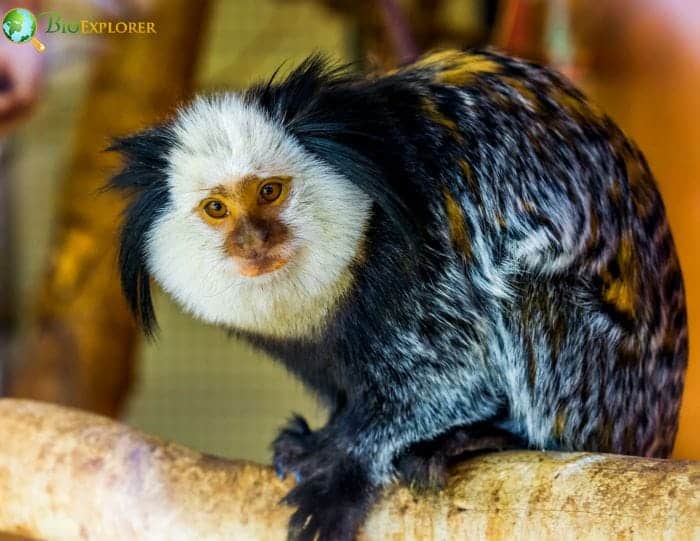
Marmosets are undoubtedly adorable. Their petite stature and inquisitive nature seem to make them ideal pets. However, the complex needs of marmosets are extremely difficult for the average pet owner to meet. There are a few pros but considerable cons to marmoset ownership.
Pros
- Playful and affectionate if properly socialized.
- The small size means less space requirements.
- Highly intelligent and enjoyable to observe.
Cons
- A specialized gum-focused diet is nearly impossible to duplicate. In captivity, their health suffers without customized supplements and nutrition.
- As colony animals, marmosets require another marmoset companion. Solitary marmosets likely develop neurotic behaviors.
- Prone to serious illnesses like diabetes, wasting syndrome, and gastrointestinal issues without expert care.
- Scent glands release a pungent odor that permeates wherever they go. Their urine and feces also smell quite strong.
- Destructive chewing habits from innate rainforest foraging. Will gnaw on woodwork, furniture, wires etc. Hard to marmoset-proof a home.
- It cannot realistically be housetrained like some other exotic pets.
- Breeding marmosets at home contributes to pet trade demand and strains on wild populations.
Perhaps the most prohibitive factor is the outright ban on owning marmosets as pets in most regions. US States where owning a Pygmy marmoset is legal include Alabama, Arkansas, Michigan, Montana, Wisconsin, North Dakota, Iowa, Nebraska, North Carolina, South Carolina, Texas, Kansas, Mississippi, Missouri, Washington, West Virginia, Virginia, and Ohio. A permit is required[3] in states like Arizona, Florida, Illinois, Indiana, Pennsylvania, Rhode Island, and Tennessee.
Acquiring marmosets through illegal channels has disastrous consequences on vulnerable wild populations when mothers are killed, and infants smuggled out of forests.
Marmosets thrive in specialized zoos and sanctuaries with experts catering to their needs. But the average home fundamentally cannot provide adequate care no matter how affectionate marmosets seem as potential pets. The cons dramatically outweigh the pros.
![]()
Unique Marmoset Monkey Facts
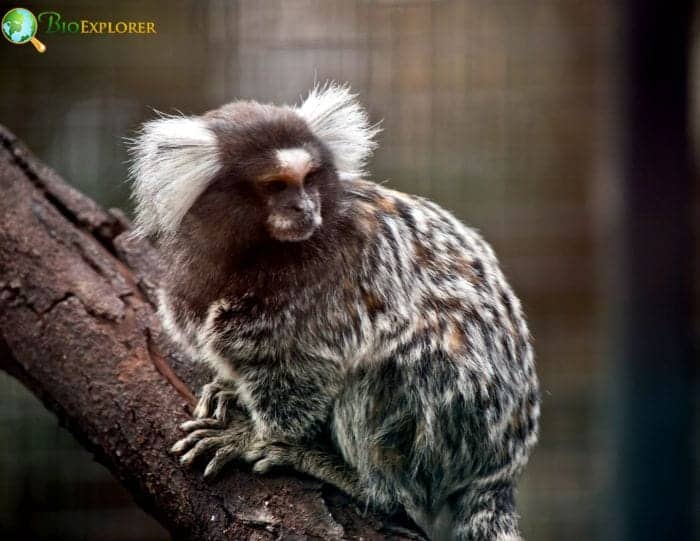
- Rotating Wrists: Marmosets have specialized wrist joints that allow them to rotate their hands almost at any angle. This helps them hang upside-down from tree branches for long periods without tiring. Gripping fingers and claw-like nails latch them onto their arboreal perches.
- Scent Communication: Marmosets have scent glands concentrated around their chest, genitals, and anus areas. They release pheromones that send chemical signals to mark territory or reproductive availability within their home range by rubbing themselves onto surfaces, objects, or even other marmosets. Scent-rubbing trees help reinforce group cohesion.
- Tiny Size: Most marmoset species measure only 8–10 inches long with furry tails that are another 10–12 inches long. But the world record for smallest monkey goes to the rare Pygmy Marmoset, weighing a mere 3.5-4.5 oz as adults, easily fitting into the palm of your hand.
- Twinning Tendencies: Unlike many primates that usually give birth to single offspring, marmosets frequently give birth to twins, with some triplets also occurring. Their bodies ovulate multiple eggs during pregnancy, increasing changes for multiples. This quick reproduction rate helps marmosets thrive in small family groups.
- Colorful Tufts: Certain marmoset species, like the Black Tufted Marmoset, have vibrant white or yellow-tipped fur sprouting around their ears and forehead that contrasts elegantly against the rest of their primarily dark fur. These colorful tufts may help marmosets identify each other from afar.
- Critical Ecosystem Roles: While diminutive in size, marmosets play an enormously important ecological role. As seed dispersers, they spread seeds from the fruits they eat across wide swaths of rainforest, which helps plant propagation. They also serve as pollinators by visiting multiple flowers for nectar transferring pollen between blossoms. Protecting marmosets is key to maintaining rainforest diversity.
![]()
Marmoset Monkeys FAQs
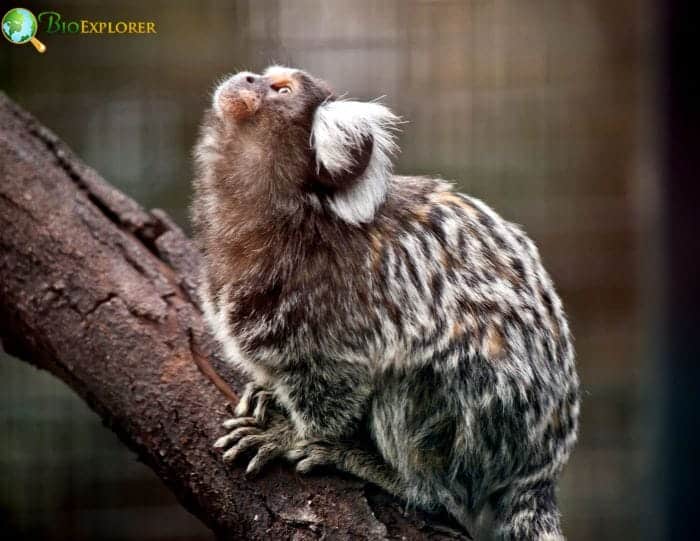
What do marmosets eat?
Marmosets eat a diverse omnivorous diet, including fruit, tree gum/sap, insects, spiders, frogs, and more. Gum scraped from special trees supplies their nutritional needs.
How big do marmosets get?
Most marmoset species grow 8-10 inches long (not counting their long furry tails). The Pygmy Marmoset is the smallest species, only around 5 inches.
Do marmosets make good pets?
No, marmosets do not make good pets for most owners. The average person cannot adequately meet their specialized social and dietary needs. They are also prone to illness outside natural environments.
How long do marmosets live?
Marmosets typically live around 8-12 years in the wild. But human care at zoos and sanctuaries extends their lifespan to 18 years. The oldest captive marmoset reached 22.2 years old.
Where can marmosets be found living in the wild?
Marmosets are native to South American rainforests, mainly in Brazil and other areas like the Amazon and Atlantic Forest. A few species exist in Central American and Mexican forests as well.
![]()
Unique behaviors like scent marking using specialized teeth called gouging canines and eating tree gum make marmosets scientifically fascinating.
![]()
Marmoset monkeys are truly captivating primates. Their tiny frames hide impressive adaptions that allow them to traverse rainforest canopies and exploit nutrient-rich niches.
Cooperatively living in small social groups, marmosets share food sources and infant care duties between family members. Rotating wrists provide them excellent grip as they leap through branches.
But marmoset populations are increasingly under threat. Habitat loss and poaching are sadly driving down numbers. Their role as pollinators and seed dispersers underscores why conservation efforts are vital.
With large eyes peering out from fluffy fur and tufted ears, marmosets showcase natural beauty. Their social bonds and intelligent behaviors are equally as endearing. Hopefully, through steady conservation progress, future generations can continue marveling at marmosets swinging through Brazilian jungle treetops.
![]()



